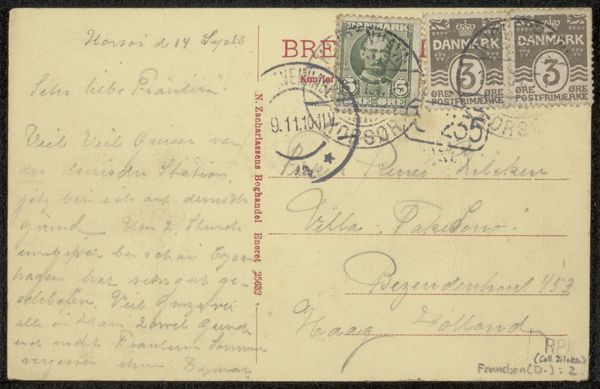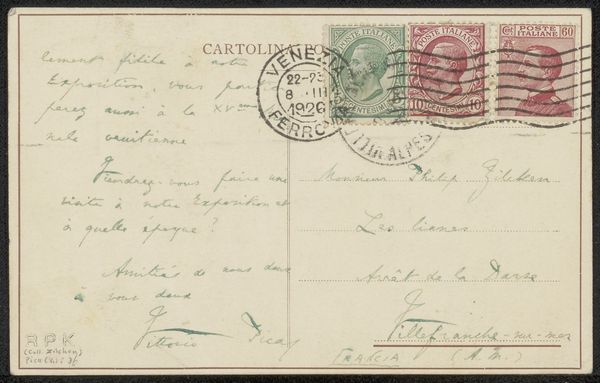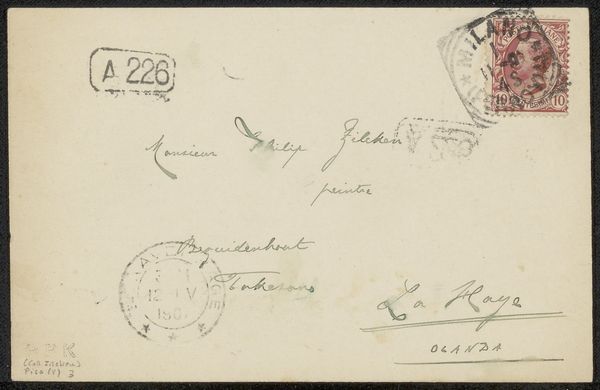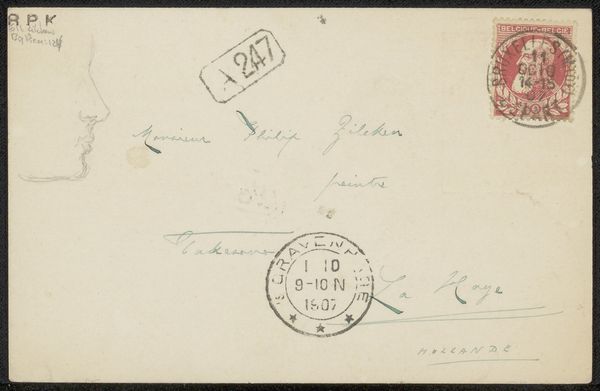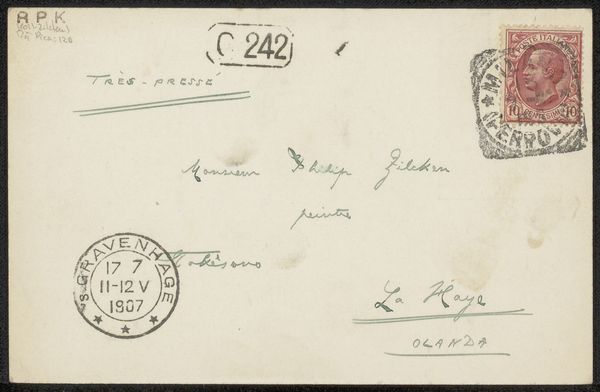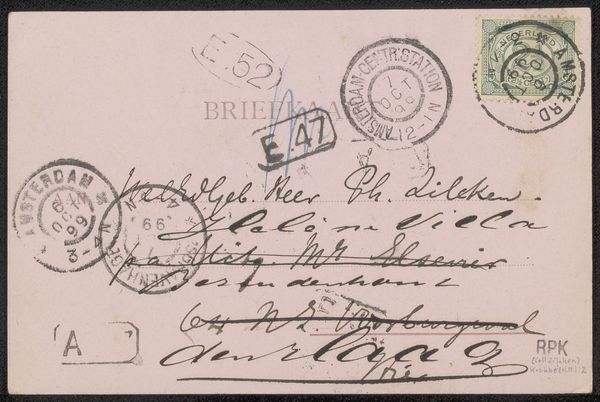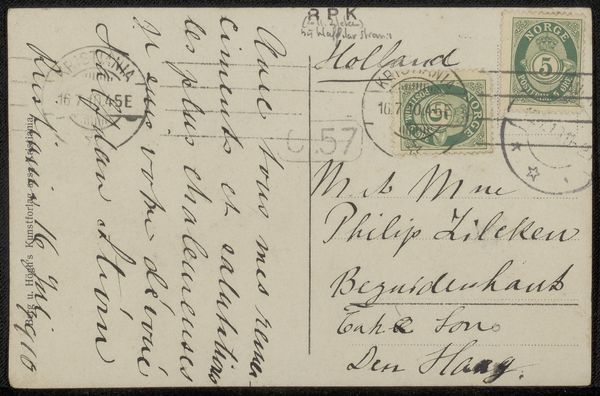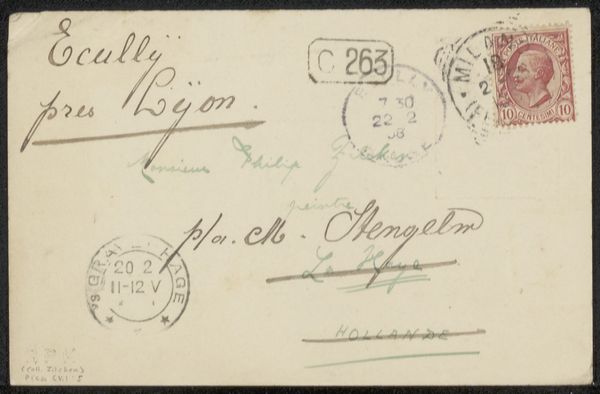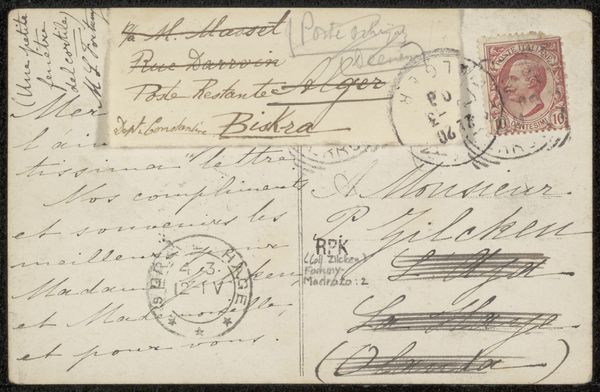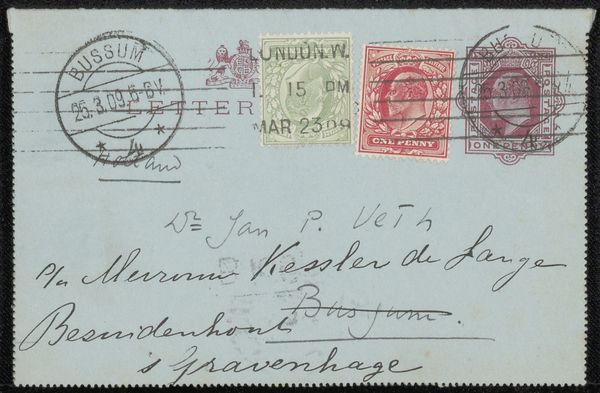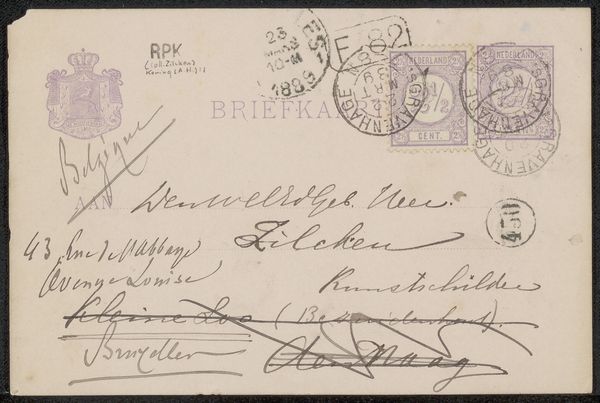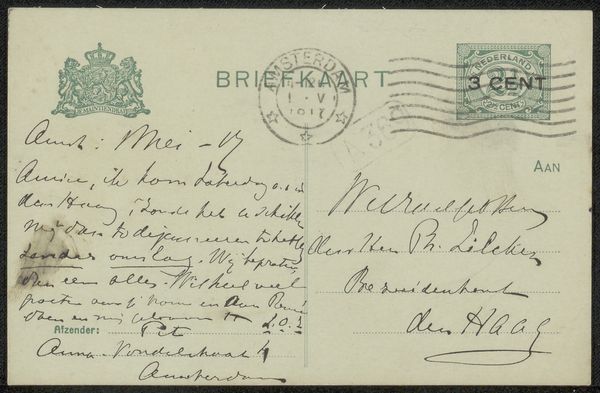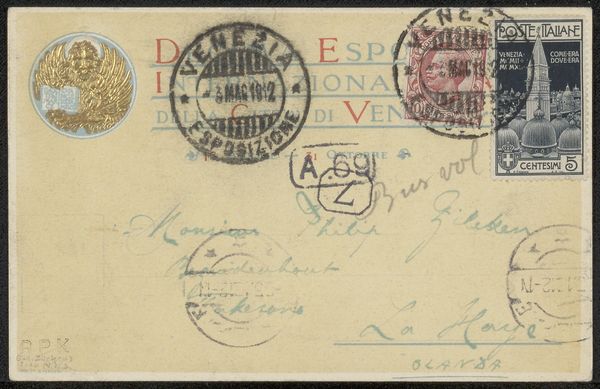
drawing, paper, ink, pen
#
drawing
#
pen drawing
#
pen sketch
#
hand drawn type
#
paper
#
personal sketchbook
#
ink
#
ink drawing experimentation
#
pen-ink sketch
#
pen work
#
sketchbook drawing
#
pen
#
storyboard and sketchbook work
#
sketchbook art
Copyright: Rijks Museum: Open Domain
Curator: This diminutive "Briefkaart aan Philip Zilcken," or Postcard to Philip Zilcken, thought to have been created sometime between 1910 and 1914 by Willem Byvanck, offers a glimpse into personal correspondence. Crafted with pen and ink on paper, it serves almost like a mini-time capsule. Editor: My initial feeling is a certain quaint charm. It's messy, layered – look at all those stamps and postal markings! It evokes a real sense of history, you know? Like holding a whisper from the past. Curator: Precisely. As a form, postcards carried a great deal of cultural weight. Their rise intersected with growing postal services and a desire for greater connectivity. The materiality matters. Editor: True, and it’s funny, isn't it? The formality of the copperplate script contrasts beautifully with the randomness of the stamps and blotchy ink. I wonder, did Zilcken collect stamps? Is that part of why Byvanck chose this card? I want to turn it over and see the front. Curator: Considering this piece as more than mere correspondence, we can begin to unpack Byvanck's intentions. Who was Zilcken, and what were their interactions like? This context enables us to understand the nuances present in their exchange. Also consider how class is highlighted by who is corresponding with whom and the accessibility to materials needed for said interaction. Editor: Okay, I love that. I see it. I was being a bit flippant earlier, just swept up in the romantic aesthetic of it. You’ve made me reconsider it as a type of social document or maybe even a snapshot of the sender-receiver dynamic. The art is embedded in the layers of correspondence. Curator: Right, and correspondence, even in our digital age, offers valuable insight. We could ask how have those relations changed through different technological modes? Byvanck’s “Briefkaart” shows how physical forms of exchange shaped intimacy and influenced a pre-digital society. Editor: Absolutely. It’s amazing how much can be read from something so small. Thanks for bringing that out; I think I was too busy being seduced by its surface appeal. Curator: These objects possess multifaceted layers for a deeper understanding, ones we continually work to interpret. Editor: So true. Well, next time, let’s examine a really enormous sculpture! My brain hurts, in a good way.
Comments
No comments
Be the first to comment and join the conversation on the ultimate creative platform.
